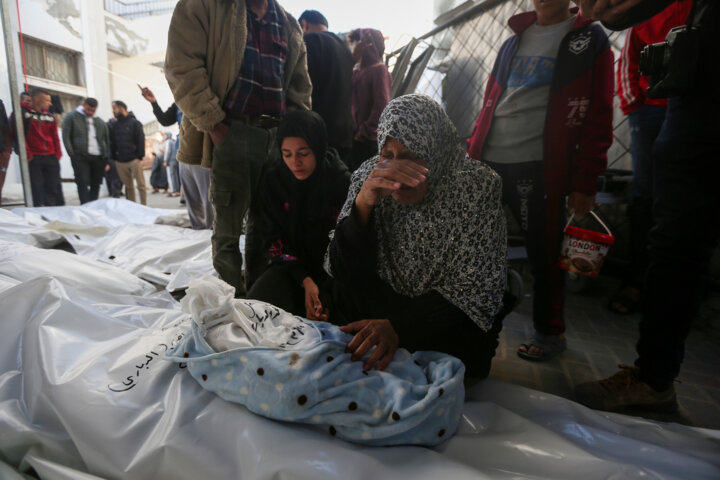Zainab al-Jabri, 80, was asleep in a classroom full of displaced Palestinian women when three explosions rocked the school. She woke up to a scene of panic and chaos, as people rushed to the school’s prayer hall, the target of the Israeli air strikes. That’s when she became immediately concerned for her only two sons and their children, who were there to pray. “I used my walker and moved while calling ‘Ziad… Ihab… my sons’,” she recalled. “When I saw the burned pieces of bodies, I realised no one survived.”
Al-Jabri’s sons and grandchildren were among more than 100 Palestinians killed in the Israeli attack on Saturday. The strikes targeted the prayer hall of al-Tabin school in Gaza City as dozens of people lined up to perform the dawn, or Fajr, prayer around 4.30am. The school had been turned into a shelter for people displaced from elsewhere in the city due to the destruction of their homes in Israel’s relentless 10-month-long bombing campaign
Al-Jabri came with her extended family to the school two weeks before the Saturday attack, after their home in the al-Shujaiya neighborhood was destroyed in an Israeli strike that killed seven of her grandchildren. “I’m an old, sick woman,” she told Middle East Eye. “My children were the light of my life, but they stole them from me. If they left at least one for me,” she added. “The school was full of young, peaceful children, women and old men. We are all peaceful people. I ask God for revenge.”
Bodies unrecognisable
The Israeli military was quick to take responsibility for the attack. It claimed the prayer hall contained a “military facility” and that 31 of those killed were “terrorists” operating from school. A preliminary investigation by the Euro-Med Human Rights Monitor found the list of names provided by the military as “terrorists” killed in the attack included several inaccuracies. At least three people had been killed in strikes earlier in the war, including a citizen killed in December.
How much more loss?
The Saturday strikes shocked many around the world and sparked international condemnation of Israel. In Gaza, the attack was seen as one of the most devastating in the war so far, leaving survivors still grappling with what happened. Rebhi Naser, 57, was known for always attending the dawn prayer in the front row of the mosque. On Saturday, he was late to the prayer, a delay that saved his life. The bombs hit the prayer hall as he was making his way over from another corner of the school.
“The pressure and flame of the air strikes knocked me to the ground,” he said. “I fainted for seconds, and my hands were shaking. I couldn’t move for 20 minutes,” he added.
Rebhi, who is originally from Beit Hanoun in the northern Gaza Strip, had sought refuge at the school in November with 30 family members after their homes were destroyed. “Most people in the school used to pray in this small prayer hall, asking God to protect us and end this genocide,” Naser told MEE. “We are not terrorists, as they claim. We are all known as peaceful displaced civilian people here, with no interest in politics or causing a threat to anyone.” Naser, who lost 10 members of his family in the Saturday strike, said he hoped the world could finally look at them as equal people. “We are human beings of flesh and blood, and we can’t bear more pain and loss,” he said. “How much more loss must we endure to end this genocide?”
middleeasteye
US officials warn aid not reaching Gaza


